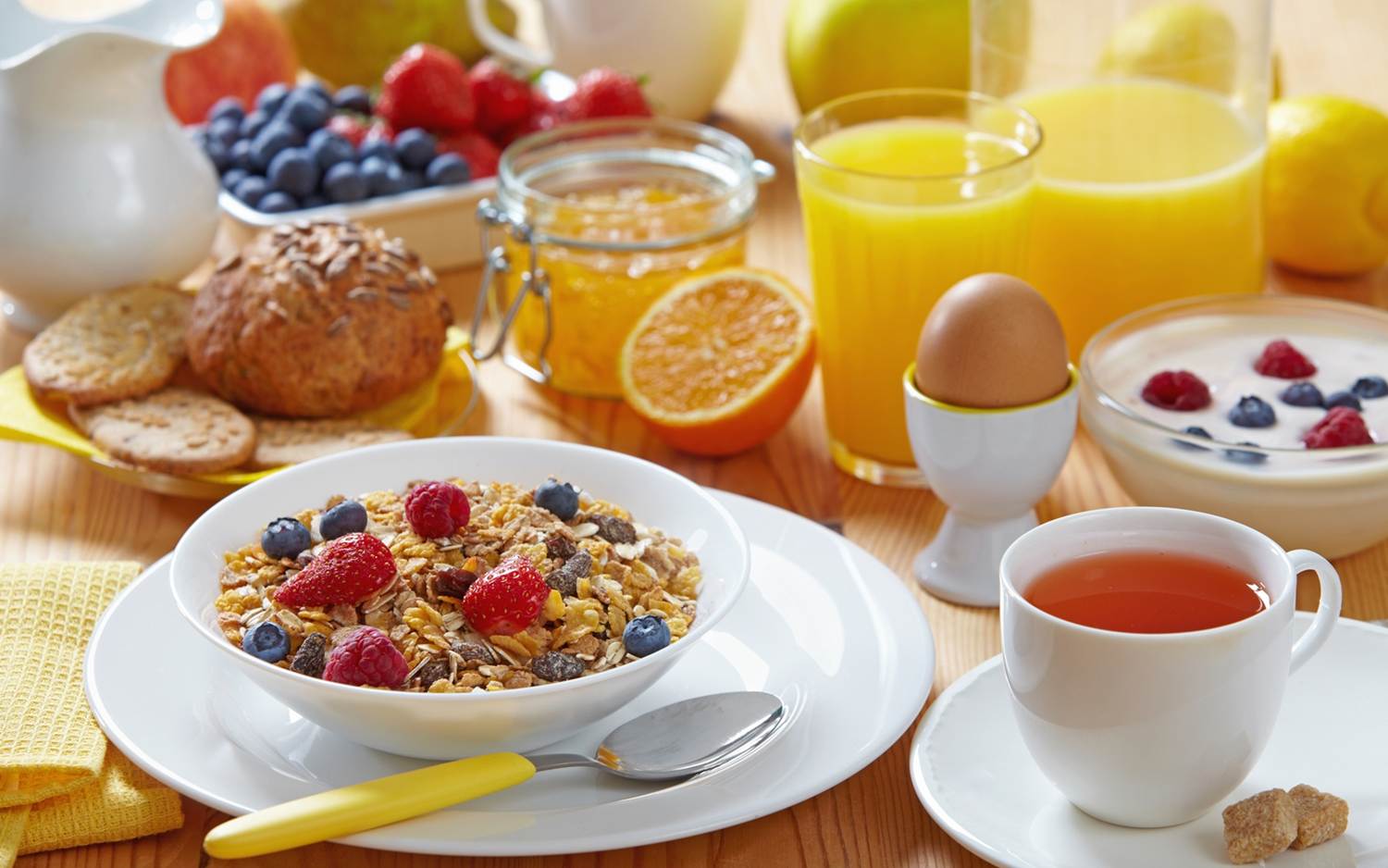5 Ways to Build a Healthy Breakfast

Eating breakfast is a perfect opportunity to get a healthy dose of several key nutrients including fiber, protein, and calcium. It can also be a good time to bond with your wife and touch base before heading out for the day. While there has been a recent debate about the merits of eating breakfast for weight loss, it is agreed that you should eat a healthy breakfast.
What you choose for breakfast is important for improving your health, and the right breakfast may keep you feeling full and help you eat less later in the day so that you may even lose a few pounds.
Here are five simple tips that I use with clients to help build a healthy breakfast.
1. Include a Healthy Protein Rich Food
Including a serving of protein rich food will help keep you full. A few great choices are low-fat Greek yogurt (yes, Greek yogurt is packed with protein), eggs, or egg whites. Nut butters such as almond butter or peanut butter are also great options so long as you practice portion control (a walnut in its shell is approximately 2 tablespoons worth). Low-fat milk and cheese are also good options.
2. Include a Serving of Fruit
Eating a serving of fruit in the morning is a great way to get a dose of fiber, vitamins and minerals, including vitamin C and potassium. Choose a fruit in season that you enjoy. A cup of berries or melon in season is a great choice. An apple or pear is portable if you want to bring it with you. An orange or half grapefruit is another great option. Whole fruit is preferred over juice. The fruit is higher in fiber and lower in calories. And it takes time to chew so you will eat slowly and recognize that you are eating.
3. Include a Whole-grain Serving
So many people are skipping carbs, in particular, healthy grains, in an effort to lose weight. Grains and carbs are not the villain. While I would recommend skipping the donuts, coffee cake, and bagels, or saving these foods for a special occasion, a cup of cooked oatmeal or a slice of whole wheat bread is a great choice to include for your morning meal. Other examples of healthy whole grains are: whole grain breakfast cereal (with at least 3 grams of fiber), brown rice cakes, a whole grain English muffin or pita, or brown rice crackers.
4. Sit Down and Enjoy!
As I always tell clients, eat mindfully and eat sitting down. When you eat on the go, you tend not even to remember that you are eating. It’s almost as if you rationalize to yourself “the calories don’t count when you eat standing.” But, as you know, calories do count regardless of whether you eat them standing or sitting. Better to sit down and enjoy a bowl of whole grain cereal than to eat a “healthy sounding” energy bar on the run.
5. Eat Slowly
Along with sitting down and enjoying your breakfast comes eating slowly. When you eat slowly, you tend to pay attention to what you are eating, and you eat less. Eating slowly also allows your body to register a feeling of satiation and fullness.
If you are in a rush, if you can, instead of wolfing down breakfast at home, bring a portable breakfast along with you and enjoy it when you get to work. You do not need to eat breakfast as soon as you get up. ( I tend to be a mid-morning breakfast eater.) The important point is that you eat something instead of waiting till 1 p.m. to get your first bite in.
Here are a few great breakfast options:
— A spinach and tomato omelet with a slice of whole grain toast and a half grapefruit.
— A Low-fat Greek yogurt with blackberries, strawberries, and a handful of whole grain cereal.
— A whole grain English muffin with a schmear of almond butter and a pear.
— A bowl of oatmeal made with fat free milk and topped with blueberries and a few walnuts.
Enjoy. We would love to hear some of your favorite breakfast choices.
Source: Huffington Post
TAGS:
SHARE:

